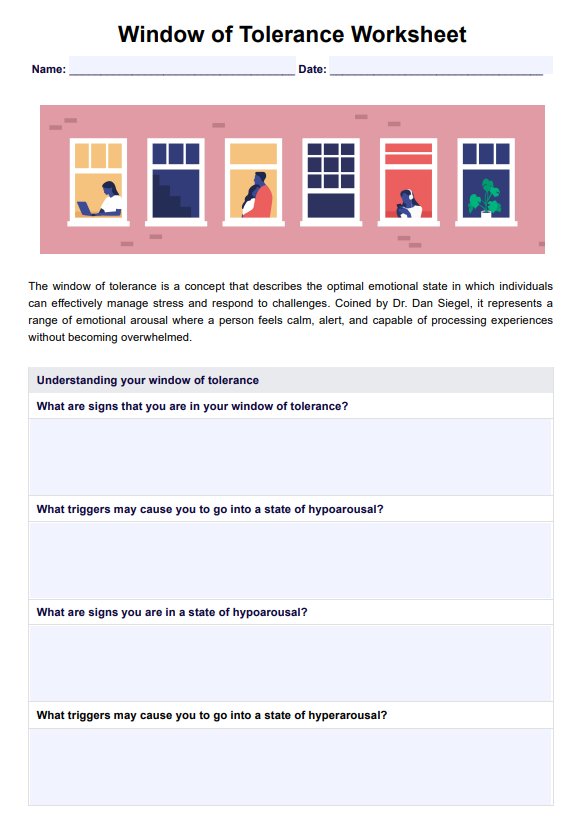The Window of Tolerance Worksheet can benefit anyone seeking to improve their emotional regulation, better manage stress, or understand their responses to trauma.

Window of Tolerance Worksheet
Help your patient manage their emotions, uncover their triggers, and improve their coping abilities with our Window of Tolerance Worksheet.
Use Template
Window of Tolerance Worksheet Template
Commonly asked questions
This worksheet is useful during times of high stress or when you notice your client frequently exceeds your tolerance window. It's also helpful as part of a regular self-reflection routine.
The worksheet identifies signs and triggers of being outside one's window of tolerance and develops and commits to new coping strategies to expand one's window of tolerance.
EHR and practice management software
Get started for free
*No credit card required
Free
$0/usd
Unlimited clients
Telehealth
1GB of storage
Client portal text
Automated billing and online payments











